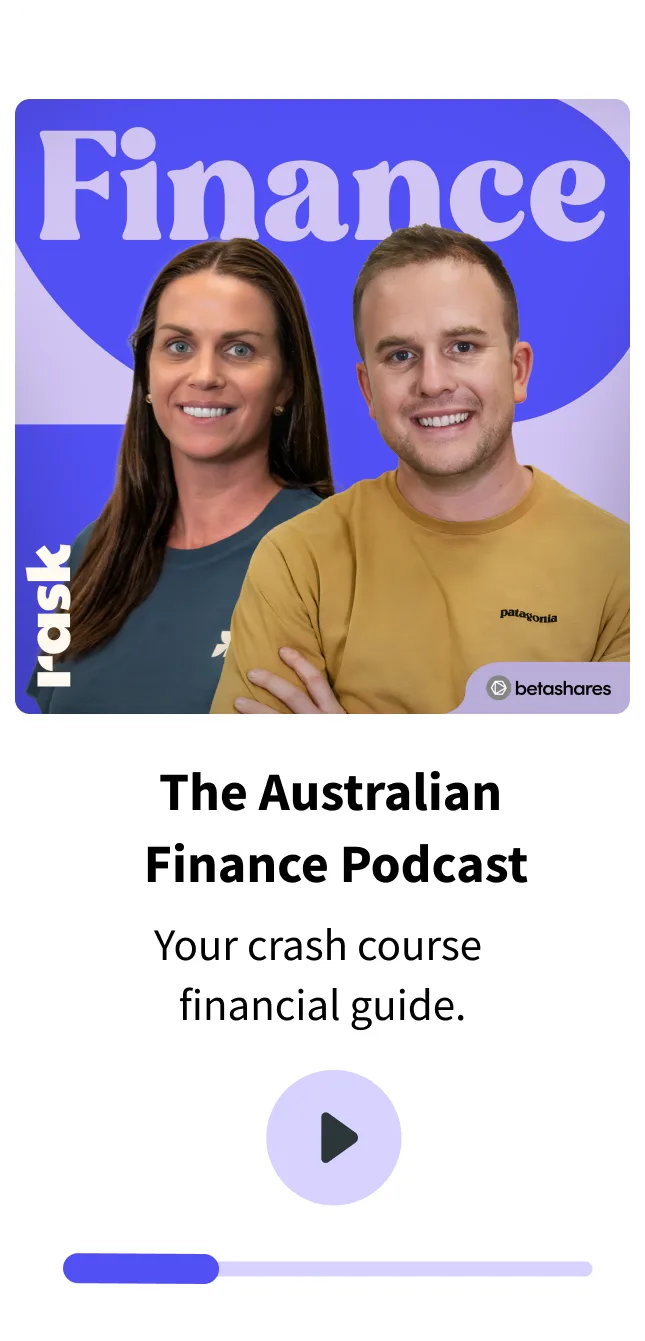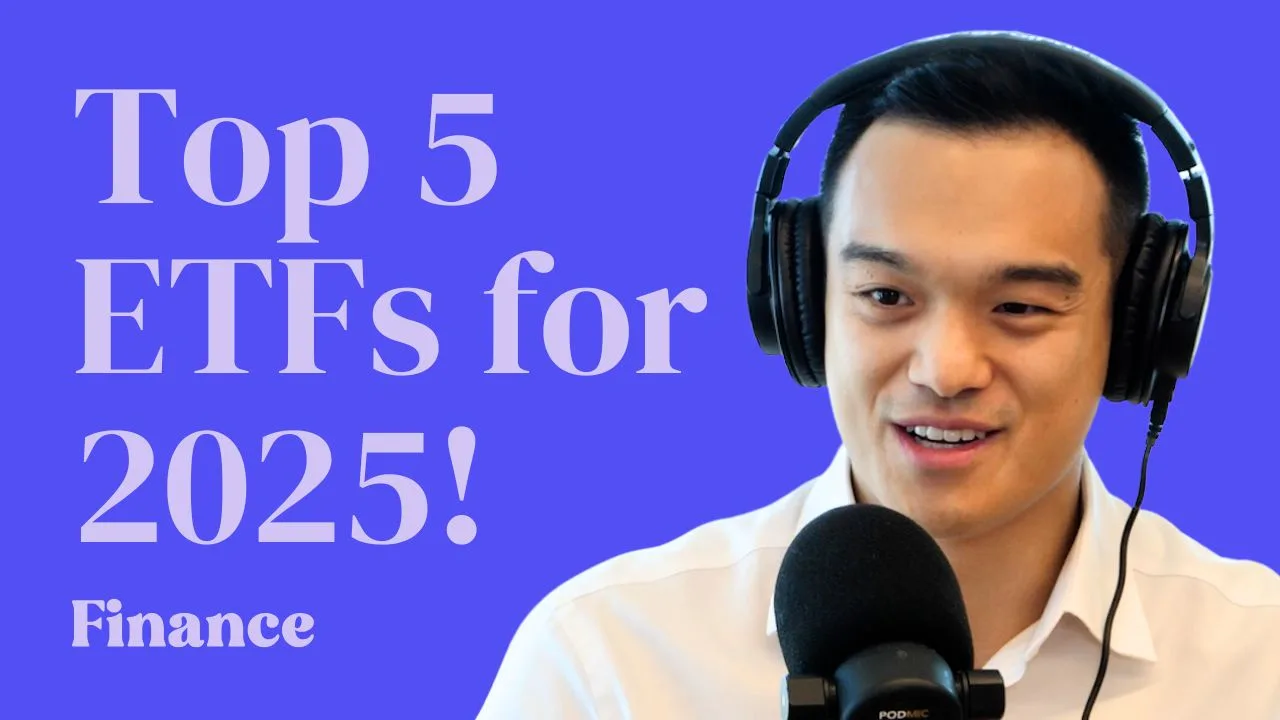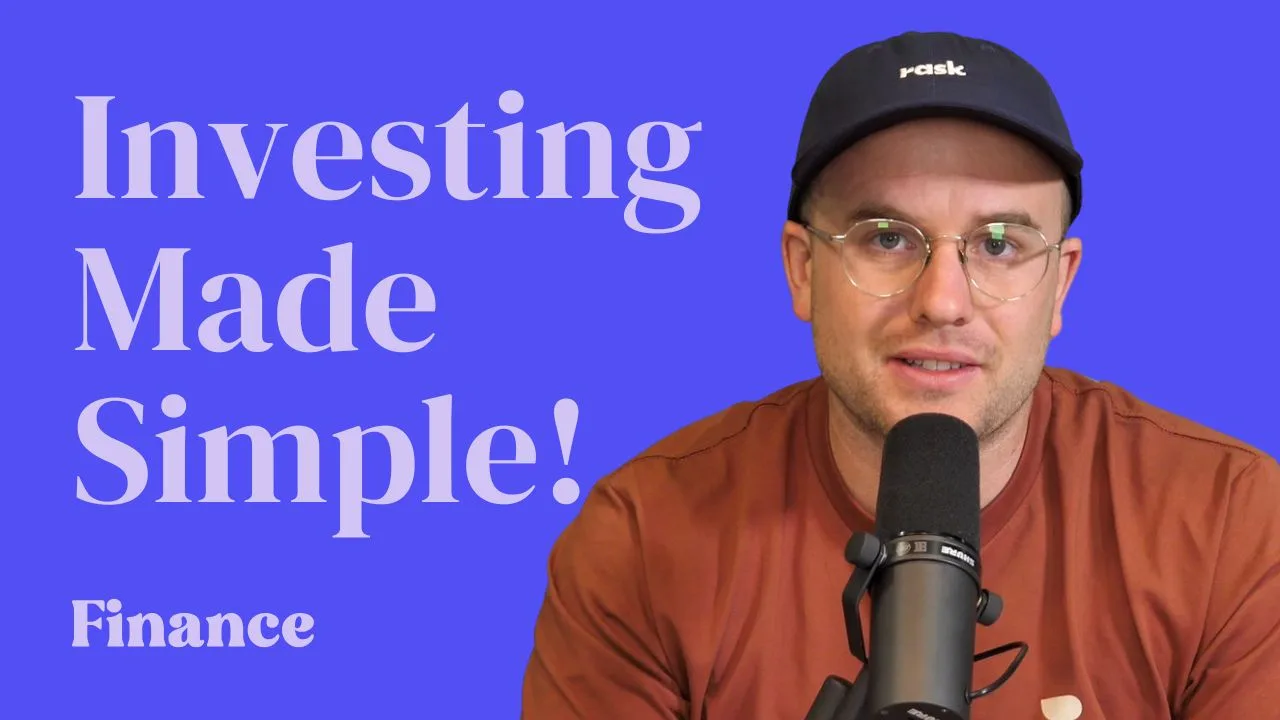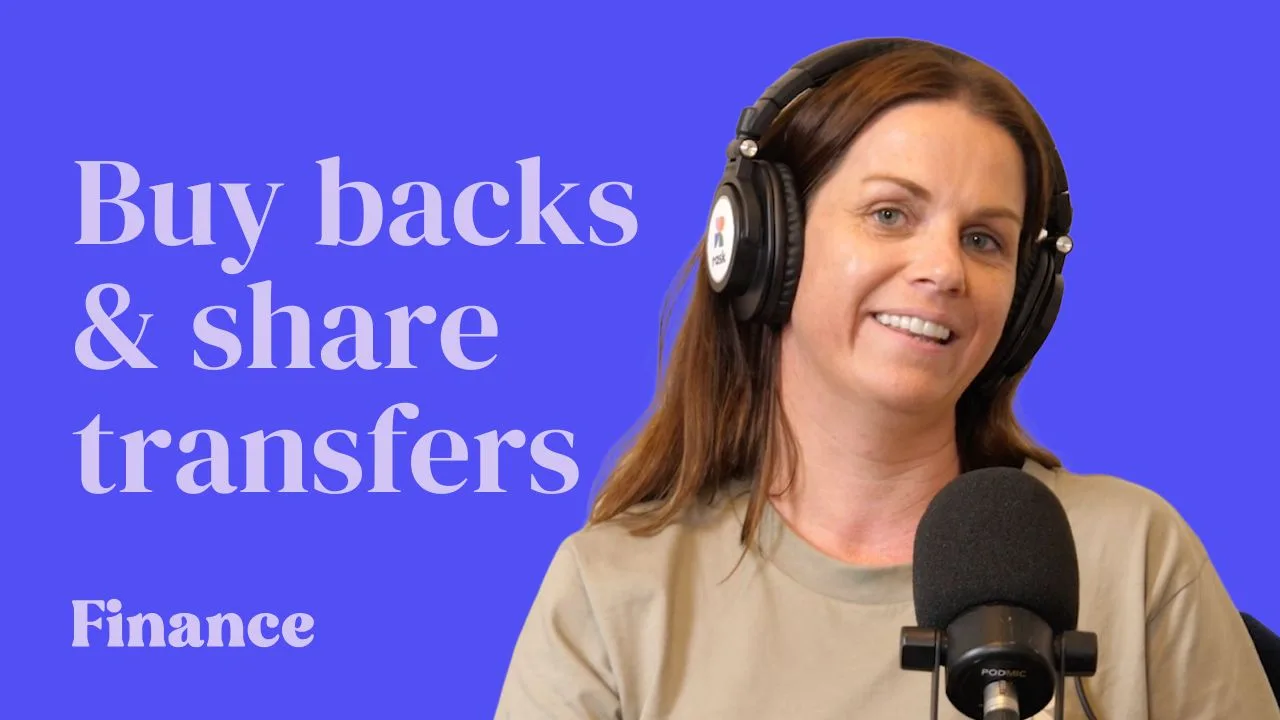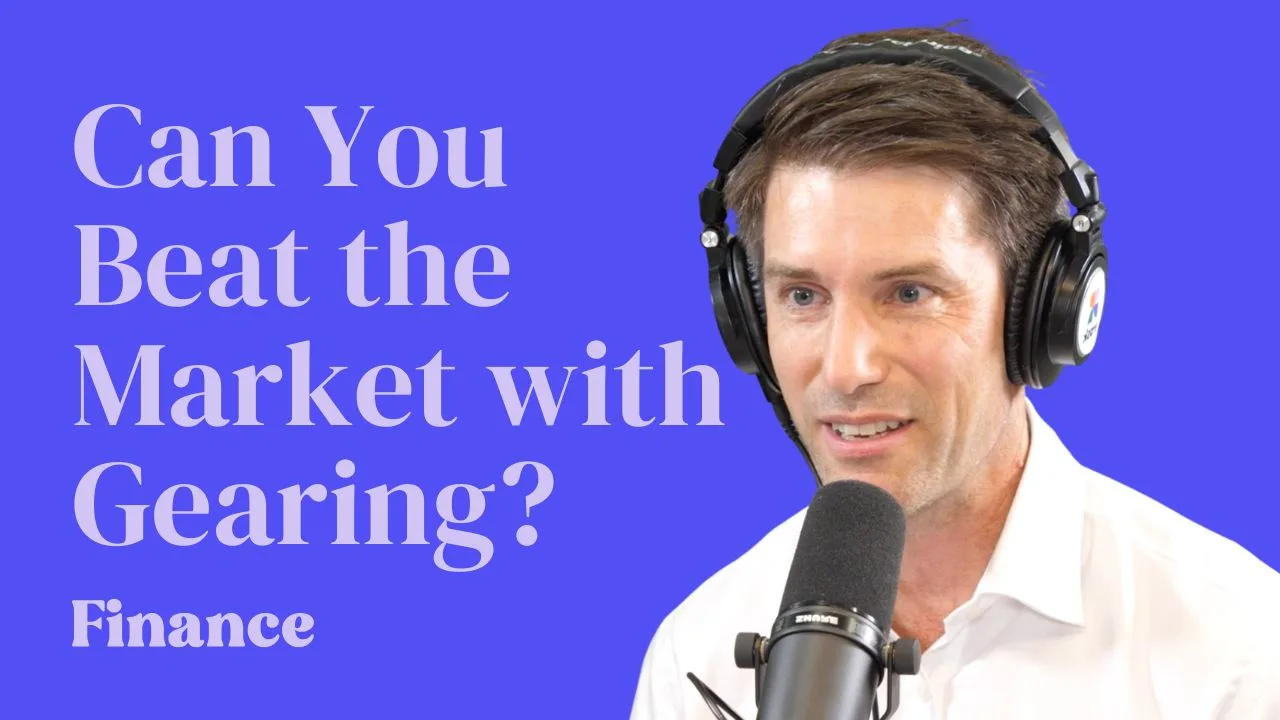For many Australians, investing is a daunting activity to get started with. However, micro-investing apps like Pearler Micro, Raiz, CommSec Pocket, Sharesies, and more have broken down many of the traditional barriers to investing for beginners.
Starting with just $5, you can get your first taste of being an owner in our global economy rather than just a consumer, which is pretty exciting! In this episode, Kate Campbell and Owen Rask dive into what micro-investing is, how it works, pros and cons, and some of the platforms you can try in Australia.
📚 Enjoyed this episode? You’ll love Kate’s book, Buying Happiness, which you can order on Booktopia or Amazon.
What is micro-investing and how does it work?
Micro-investing is a way to get started investing with much less than the typical $500 minimum purchase mandated by most Australian brokers. It focuses on getting you started investing with a small amount and making regular contributions over time, with the wheels of compound interest working in your favour over the long run.
Some micro-investing apps (like Raiz Invest or Spaceship) allow you to invest directly into a diversified portfolio of shares or ETFs from just $5 and others are more like a broker, where you can buy a single or fractional share or ETF (like CommSec Pocket or Stake).
Other features offered by some micro-investing apps to keep an eye on include round-up contributions, auto-investments and regular contribution plans via direct debit, which are very helpful tools for new investors looking to invest on a more regular basis.
Pros v Cons of micro-investing
When it comes to micro-investing apps, you’re generally not comparing apples with apples, so there’s a number of factors you should investigate to decide if the product is right for your investing needs.
Quick and easy to get started
One of the positives about micro-investing apps is that they’re very easy to use. If you’re just looking to dip you toe into the water while you’re learning about investing, they might be a great tool for you to start with as you learn the ropes. Many of them allow you to open an account via the app on the spot, and invest your first few dollars almost instantly (if the market’s open)!
Investigate the fees
When investing very small amounts, sometimes the fees can outweigh the benefits of investing and it may be a better idea to keep saving until you can invest a larger amount. Make sure you look into the management/monthly subscription fees, brokerage/transaction fees, indirect costs and account opening/closure costs, which are often found in the product disclosure statement (PDS).
Is it legit?
Although our financial services industry for retail investors like you and I is highly regulated, I’d always recommend doing your own due diligence and getting comfortable with the structure of the investment product.
The PDS should have details about where your assets are held, and I’d recommend searching for the word ‘custodian’, as micro-investing apps will often use a 3rd-party to hold your assets and keep them separate from their own funds. In the event of something happening to one of these companies, they may be able to appoint a new manager or liquidate the holdings, so it’s a good idea to know who’s involved.
If you feel like scrolling down to read the fine print at the bottom of the page, have a look if the company has an Australian Financial Services License (AFSL), which is a government license to provide financial services to consumers in Australia.
If you’d like to do your own research on a micro-investing app, here are some of the questions that I’d be asking to further understand the structure:
- Where will my assets be held? Do I get my own holder identification number (HIN), are my holdings beneficially held or do I receive units in a fund?
- Do you use an external custodian and who is it?
- Are you registered to provided financial services in Australia? Do you have an AFSL?
- What would happen in the event your company goes under?
Can you lose money?
Just because you’re only investing a small amount of money doesn’t take away the risks of investing. Micro-investing apps still expose you to the same risks that you’d get investing in those assets directly, but a 20% decline on $10 will feel very different to the same decline on $1,000.
Do your research and make sure you know where you’re putting your money. If you’re keen to learn more, take our free ETF and share investing courses for beginners, which explain some of these risks in more detail.
Do I get dividends?
Although micro-investing apps may have less flexibility when it comes to dividends, it’s worth investigating whether they’re automatically invested back into your portfolio or paid out to your nominated bank account. Not every company or investment pays a dividend, so I’d definitely check on each individual providers website and get in touch with them, if receiving dividends is important factor for you.
Micro-investing apps in Australia
Although some of these are categorised as ‘fractional investing apps’ rather than micro-investing apps, I thought I’d round up the current options you have in Australia, for getting started investing with smaller amounts of money.
- Raiz Invest – micro-investing in a choice of 7 diversified standard ETF portfolios
- Spaceship – micro-investing with two different portfolios
- CommSec Pocket – invest in a selection of 10 individual ASX ETFs (individual HIN)
- Superhero – $100 minimum ASX investing (group HIN model)
- Stake – fractional investing in US shares/ETFs (MMP of $500 for ASX – indiv HIN)
- Pearler Micro (podcast partner) – choice of 8 ETF fund options
Some data from the 30th November 2023, please check the providers website for the most up to date details (they change a lot)!
| Platform | Investment Options | Fees | HIN? |
| Raiz | Round-ups, automated regular investments & lump sums
Raiz rewards Raiz super Raiz kids Standard portfolios: conservative, moderately conservative, moderate, moderately aggressive, aggressive, emerald (social responsible), sapphire (added 5% bitcoin) Raiz Plus: Set your own asset allocation Raiz Property: 30% allocation to Raiz property fund |
Standard Portfolios
Difference fees for plus, sapphire & property portfolios |
Custodial (fund) |
| Spaceship | NEW: US fractional investing (from $10)
$2/mo for Voyager customers PLUS 0.7% FX fee on trades – gives you option to automate Spaceship Universe Portfolio: Invest in a portfolio of world-changing companies, strategically picked by our investment team, that meet our “Where the World is Going” criteria, including: Nvidia, Meta, Tesla, Apple, and Netflix. Spaceship Earth Portfolio: Invest in a portfolio of companies that have or are expected to have a positive impact on people and the planet, including: Airbnb, Shopify, Atlassian, Bumble, and First Solar. Excluding fossil fuels, weapons, tobacco, alcohol, gambling, nuclear power Spaceship Origin Portfolio: Rules-based portfolio of 200 of the largest global and Australian companies by market cap, with blue chip and established stocks such as Microsoft, CBA, Alphabet, Wisetech, and Amazon. |
Monthly fee & management fee
Monthly fee: $2/mo (if balance greater than $100) Management fee:
|
Custodial (fund) |
| CommSec Pocket | 10 ETF options to choose from on platform
|
When you trade through the app, you’ll pay $2 each time you invest or sell up to $1,000.
Trades over $1,000 are charged at 0.20% of the trade value. For example, a $1,100 trade will cost you $2.20 ($1,100 x 0.20%) |
Individual HIN |
| Stake | US & ASX brokerage platform
US minimum: $10 USD ASX minimum: ASX requires a minimum investment of A$500 (excluding brokerage) when purchasing shares in any ASX-listed security for the first time. This is known as the ‘Minimum Marketable Parcel’ (MMP) of shares. Once the minimum marketable parcel is met you can place smaller order sizes to increase your position in that same security. The minimum value of subsequent buy orders is A$20, which is to ensure that orders always meet market integrity rules. |
$3 AUD for ASX trades up to $30,000
$3 USD for US trades up to $30,000 USD NOTE: To invest on Stake Wall St, you’ll need U.S. dollars in your account. Our FX fee of 70 bps applies when you convert AUD into USD and vice versa – not every time you trade. |
Individual HIN for ASX |
| Superhero | ASX & US shares
ASX: $100 minimum US: $10 USD minimum |
ASX
$0 to BUY ETFs $5 to SELL ETFs $5 brokerage on shares US $0 brokerage on US shares & ETFs FX fee 70bps |
Custodian (Finclear) |
| Sharesies | Buy & sell ASX, NZ and US shares/ETFs | Pay as you go
Each time you buy or sell shares, there’s a 1.9% transaction fee on the amount invested (or sold), up to a fee cap. Transaction fees capped at $5 USD for US shares $6 AUD for Aussie shares $25 NZD for NZ shares Plus, plans offered at $5, $10 and $20 price points, depending on how much you invest each month WATCH OUT: Some fees on different types of account top-ups When you exchange money, you’re charged a 0.6% currency exchange fee. |
Custodian
Investments are held by New Zealand registered company, Sharesies Nominee Limited on bare trust for you. CMC Markets Stockbroking Ltd, (or CMC Markets for short!) AFSL No. 246381, to execute buy and sell orders on behalf of Sharesies. Drivewealth used for US transactions |
| Pearler Micro*
*Show partner |
Eight ETF fund options
$5 minimum Automated investing |
Account fee per month of:
for balances below $100, nil; and for balances equal to or more than $100:
ETF indirect management fees Buy/Sell Spread: ±0.25% |
Pearler Investors Fund is issued by Melbourne Securities Corporation Limited
Custodians Sandhurst Trustees Limited (ACN 004 030 737 AFSL 237906) has been appointed by MSC to hold domestic Fund assets as custodian Phillip Capital Limited (ACN 002 918 247 AFSL 246827) has been appointed by MSC to hold international Fund assets as custodian |
